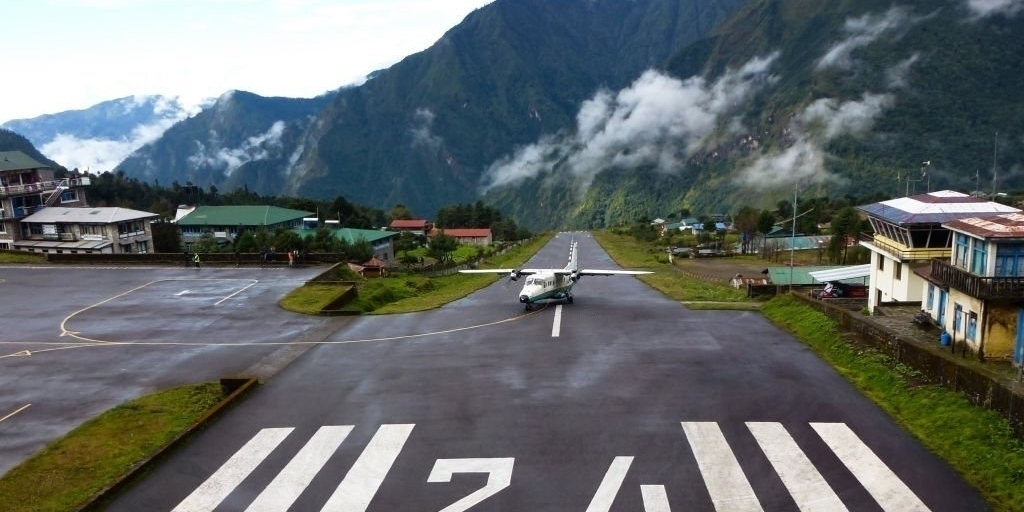


The Everest Base Camp (EBC) trek with Island Peak climbing is a dream adventure for many avid trekkers and mountaineers. It combines the breathtaking beauty of the Everest region with the exhilaration of summiting a 6,189-meter peak. The mesmerizing view of the world’s highest peak and various other snow-capped mountains makes your journey even more beautiful. Walking through the natural wonders of Nepal, exploring the isolated villages resembling the Sherpa cultures, and experiencing the humble and welcoming gestures of Nepalese people are offered by the EBC trek. Trails through the greenery of Sagarmatha National Park offering you the best of the wildlife along with the flora and fauna is a reason to look forward to this trek. Everest Base camp trek with the Island Peak is a perfect combination of trekking and the adventure of climbing a snowcapped peak.
In order to enjoy the climb and the trek to the fullest, it is necessary to understand the climate and season as the weather can play a vital role in determining your experiences. March to May and September to November are considered to be the best season to trek in the Himalayan region of Nepal. As March to May welcomes the spring season, the trek is livelier with the greenery in the hilly region which is why it is considered one of the best seasons. You enjoy the woody forest of the Sagarmatha National Park as you walk across the trails. Even if it is one of the best seasons to trek in the Everest region and Climb Island Peak, the trails are less crowded, and easier accommodations are available. Likewise, September to November is also one of the best seasons because it offers better weather leading to clear amazing views of the mountains, and offers a mixture of warm days with cold nights. Not only that September to November offers the Festive season as well, which is why the EBC trekking routes are more crowded than usual. Thus, choosing the right season to undertake this challenging journey is crucial for maximizing your chances of success and enjoying optimal weather conditions.
1. Spring (March to May): Spring is widely regarded as the best time for the EBC trek with Island Peak climbing. During this season, the weather is generally stable, offering clear skies and excellent visibility. The temperatures start to warm up, making it comfortable for both trekking and climbing. The colorful rhododendron forests along the trail come alive, creating a magical ambiance. The route to Everest Base Camp and Island Peak is less crowded compared to the autumn season, allowing for a more peaceful and immersive experience. Spring is also the climbing season for Island Peak, and the conditions are ideal for mountaineering.
2. Autumn (September to November): Autumn is another favorable season for the EBC trek with Island Peak climbing. It is considered the peak trekking season in Nepal due to the stable weather and clear mountain views. The temperatures are mild, with warm days and cool nights. The trails are vibrant with lush vegetation, and the skies are usually clear, providing stunning panoramas of the Everest region. Autumn also attracts a large number of trekkers and climbers, so you can expect a lively atmosphere and the opportunity to meet fellow adventurers from around the world.
3. Considerations for Winter and Monsoon: While spring and autumn are the preferred seasons for the EBC trek with Island Peak climbing, it is important to be aware of the conditions during winter (December to February) and monsoon (June to August).
Winter:
Winter brings cold temperatures and heavy snowfall to the Everest region. The trails can be challenging due to the accumulation of snow, making trekking and climbing more demanding and risky. The extreme cold can pose additional hazards, including frostbite. However, if you are an experienced mountaineer with proper gear and training, winter can offer a unique and secluded experience, with fewer tourists on the trail.
Monsoon:
The monsoon season is characterized by heavy rainfall and frequent cloud cover. The trails become muddy and slippery, and the mountain views are often obstructed. Landslides and avalanches are also more common during this time. Trekking and climbing in monsoon conditions are generally not recommended due to the increased risks and limited visibility.
For the optimal experience of the EBC trek with Island Peak climbing, it is recommended to plan your adventure during the spring or autumn seasons. Both seasons offer stable weather, clear skies, and pleasant temperatures, enhancing your chances of a successful summit and providing breathtaking vistas of the Everest region. However, if you are an experienced mountaineer seeking a unique challenge, you may consider venturing during winter, while exercising caution and preparing for the harsh conditions. Monsoon, on the other hand, should be avoided due to safety concerns. Remember to consult with experienced trekking agencies and guides who can provide the most up-to-date information and help you plan your unforgettable journey to the Everest Base Camp and Island Peak.
